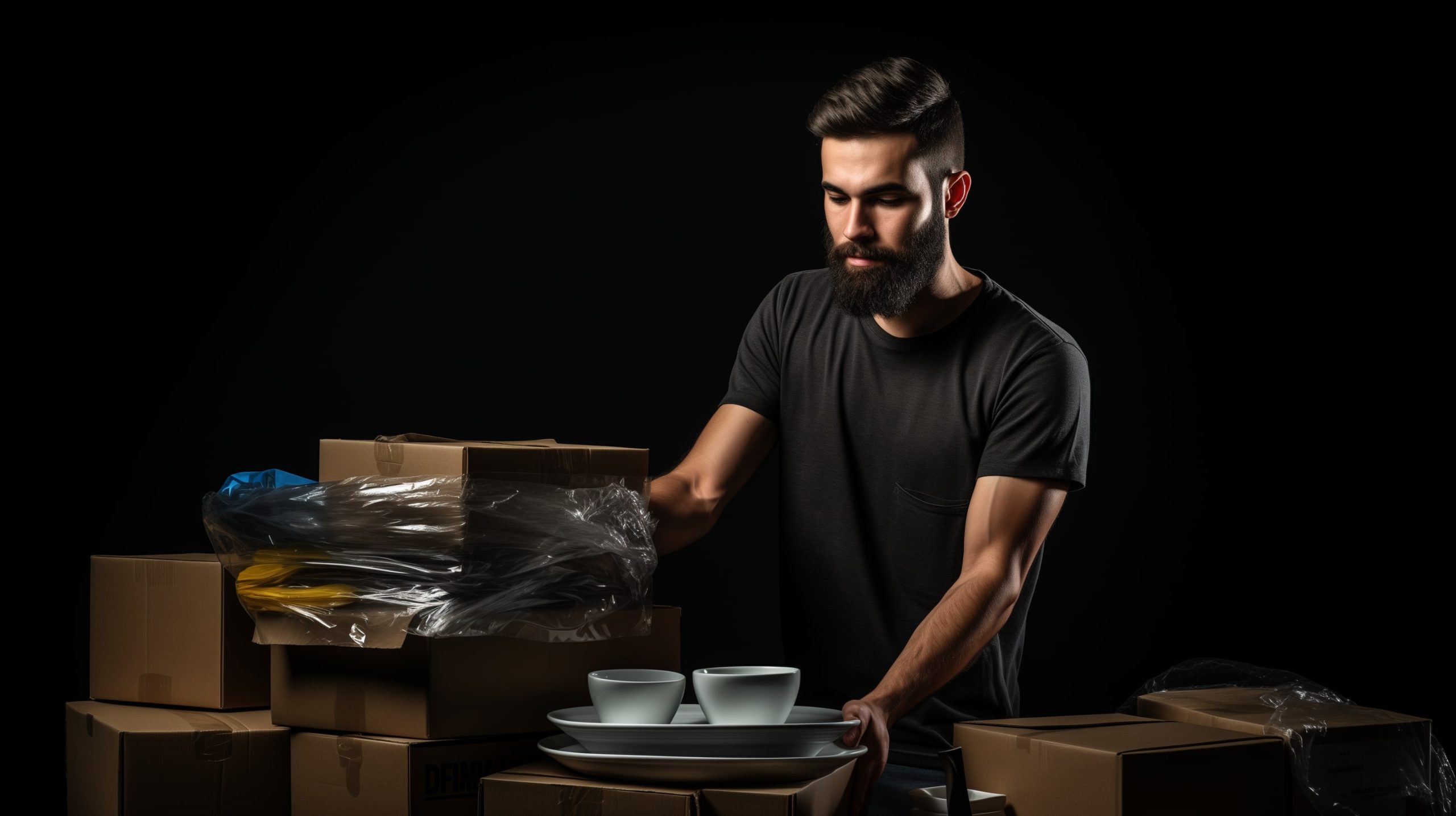Packing for a move involves a strategic approach, especially when it comes to fragile items like dishes, glassware, and kitchen appliances. Slick Moving, your trusted moving partner, understands the importance of a smooth transition. In this guide, NYC Movers will delve into the meticulous process of packing dishes and kitchenware using top-notch materials and the expertise of Slick Moving.
1. Materials for Packing Dishes
The foundation of a successful dish-packing endeavor is the right materials. Slick Moving recommends investing in dish boxes – double-layered cardboard boxes designed for fragile items. These boxes provide superior protection, preventing breakages during the move. Additionally, cell packs, bubble wrap, packing tape, labels, markers, and a generous supply of packing paper are essential for a comprehensive packing experience.
While the newspaper is commonly used, Slick Moving advises using packing paper for superior protection. Newspaper ink can smudge and potentially transfer onto items, adding unnecessary cleanup time during unpacking.
2. How to Pack Dishes for Moving
Slick Moving’s step-by-step method ensures the safe packing of dishes:
- Lay out dishes on a flat surface and assemble sturdy moving boxes.
- Reinforce box seams with heavy-duty packing tape.
- Fill the box bottom with crumpled packing paper.
- Wrap each dish individually using sheets of packing paper.
- Organize items in rows, placing heavier dishes at the bottom.
- Fill empty spaces with additional packing material.
- Seal the box, label it as “Fragile,” and mark the top and sides.
Tip: Mark boxes containing essential kitchen items that need immediate unpacking.

3. How to Pack Glasses
For glassware, careful consideration is crucial. Slick Moving offers the following tips:
- Assess and sort out glassware before packing.
- Utilize dish boxes with cell pack inserts or line the box with dish towels and crumpled packing paper.
- Stuff interiors with crumpled paper and wrap each piece individually.
- Pack glasses upright in rows, adding cushioning between layers.
- Seal boxes, label them as “Fragile,” and indicate the right side up.
4. How to Pack Wine Glasses
Fine stemware requires extra care. In addition to standard glassware packing:
- Wrap the paper around stems for additional padding.
- Consider double-boxing for especially fragile or expensive stemware.
5. How to Pack Plates, Bowls, and Platters
Slick Moving simplifies the packing of plates, bowls, and platters:
- Wrap each dish individually.
- Group plates of the same size and pack them on their sides.
- Fill gaps with crumpled paper and avoid overloading boxes.
6. How to Pack Pots and Pans
Protecting cookware is crucial; here’s how Slick Moving suggests doing it:
- Remove glass lids and wrap them separately.
- Nest pots and pans by size with added cushioning.
- Distribute heavy cast iron cookware among other items.

7. How to Pack Small Appliances
For small kitchen appliances, Slick Moving advises:
- Ideally, use original boxes; otherwise, choose the smallest available box.
- Pack complementary accessories with the appliances.
8. How to Pack Other Kitchenware
Slick Moving covers various kitchen items:
- Cull and group plastic storage containers.
- Protect teapots and teakettles with rolled packing paper.
- Pack knives horizontally, secured in a plastic bin within a moving box.
9. Additional Packing Tips for Dishes
Slick Moving provides additional insights for a seamless move:
- Avoid hasty packing; plan and execute carefully.
- Keep essential kitchen items accessible until the last minute.
- Fill empty spaces in boxes to prevent shifting during transit.
- Maintain box weights under 40 pounds for easier handling.
Conclusion
Packing dishes requires precision and care. By following Slick Moving’s detailed guide and utilizing top-quality materials, your dishes, glassware, and kitchenware will reach your new home unscathed. Trust in Slick Moving – a moving company for a seamless and stress-free moving experience.

